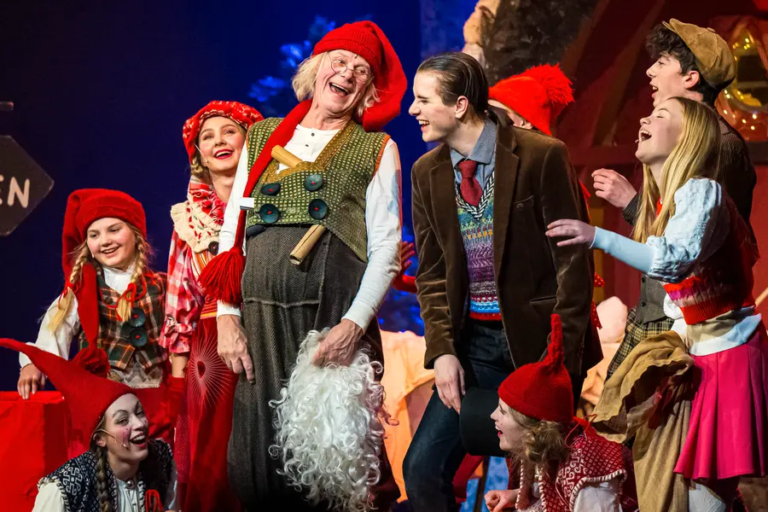Hancock Bird: How David Hancock Revolutionized Eagle Conservation
The term “Hancock birds” refers to a vast, interconnected ecosystem where human innovation and commitment harmoniously blend with the grandeur of avian species, especially the bald eagle. This concept is explored through the lens of the Hancock Wildlife Foundation (HWF), which showcases a multifaceted approach to wildlife conservation. By engaging in diverse conservation efforts, the HWF not only contributes to the protection of these magnificent birds but also fosters public interest and enthusiasm for avian preservation.
A Leader in Bird Conservation

Bald Eagle Conservation Initiatives
At the heart of the Hancock Wildlife Foundation’s (HWF) conservation efforts lies the bald eagle, a symbol of strength and freedom. HWF, under the guidance of renowned conservationist David Hancock, has developed innovative strategies that highlight the importance of preserving eagle habitats and conducting rigorous scientific research to ensure the survival and prosperity of these magnificent birds. Through extensive field research and live eagle camera feeds, HWF engages a global community of wildlife enthusiasts and advocates, offering unique insights into the lives of bald eagles.
Preserving Wildlife Habitats
HWF’s conservation mission extends beyond individual species to the protection of entire ecosystems. Recognizing the intricate connections between wildlife and their habitats, HWF participates in initiatives aimed at preserving natural environments. This holistic approach not only benefits bald eagles but also supports overall biodiversity, which is crucial for maintaining a balanced and healthy ecosystem.
Raptor Rehabilitation and Care
HWF’s raptor rehabilitation programs offer sanctuary to injured or orphaned birds, providing them with a chance for recovery and a return to the wild. These programs, integral to HWF’s broader conservation goals, underscore the organization’s commitment to the welfare of individual raptors. By rehabilitating and monitoring released birds, HWF contributes to the resilience and sustainability of raptor populations.
Live Eagle Cameras
HWF’s live eagle cameras have revolutionized our connection with wildlife, offering a real-time glimpse into the daily lives of eagles. This advanced technology not only inspires awe and fosters a deeper appreciation for nature but also serves as a valuable educational resource, bridging the gap between people and the natural world.
Adapting to Urbanization
As urban development encroaches on natural habitats, understanding how wildlife, particularly raptors, adapts to these changes becomes crucial. HWF’s research into urban wildlife adaptation provides essential insights into the challenges and opportunities for human-wildlife coexistence. This knowledge is vital for creating strategies that balance urban growth with the preservation of biodiversity.
Fostering Engagement and Education: Cultivating a Community for Conservation
Avian Conservation Education
Education serves as a cornerstone of the Hancock Wildlife Foundation’s (HWF) efforts in wildlife conservation. By providing diverse educational resources and opportunities, HWF empowers individuals of all ages to become advocates for environmental protection. The foundation’s educational programs, which include public webinars and classroom materials, are designed to ignite curiosity, enhance knowledge, and inspire proactive involvement in conservation.
Online Wildlife Streaming and Global Outreach
Utilizing advanced streaming technologies, HWF extends its reach and engages a global audience in real-time conservation activities. This approach not only educates viewers about wildlife but also fosters a sense of community among those who share a passion for conservation. By connecting people worldwide, HWF enhances awareness and encourages collective action toward protecting nature.
Eco-Tourism and Bird Watching
HWF promotes eco-tourism and bird watching as a way to merge leisure with conservation. These activities offer a chance to appreciate the beauty of wildlife while underscoring the importance of protecting natural habitats. By highlighting the connection between recreational enjoyment and conservation efforts, HWF helps ensure that future generations can continue to experience and value these natural wonders.
David Hancock’s Legacy and Path Forward

David Hancock’s Contributions
David Hancock’s impact on bird conservation is profoundly evident through the ongoing work of the Hancock Wildlife Foundation (HWF). His expertise and dedication have pioneered new methods in wildlife research and conservation, inspiring many to join the cause. Hancock’s innovative approach has played a crucial role in advancing our understanding and protection of avian species.
Advancements in Conservation Technology
Looking ahead, HWF remains committed to exploring cutting-edge technologies to enhance its conservation efforts. Future innovations, including improved live streaming capabilities and advanced tracking systems, are expected to deepen our understanding of wildlife behavior and bolster conservation outcomes. These technological advancements will continue to play a significant role in HWF’s mission to protect and preserve wildlife.
A Call to Action
The story of the Hancock bird embodies a message of hope, connection, and exploration. It highlights the intricate relationship between humans and the natural world, demonstrating the power of collective action in safeguarding biodiversity. As HWF continues to lead by example, it encourages us all to cherish and protect the remarkable birds that grace our skies.
Uncovering Eagle Nesting Behaviors
Understanding the complex behaviors associated with eagle nesting is vital for effective conservation. HWF’s research focuses on observing these behaviors to better comprehend the needs of bald eagles during their breeding season. This knowledge is crucial for developing informed management and conservation strategies for their habitats.
Learning from Live Eagle Cams
Live eagle cameras offer a unique opportunity to observe eagles as they nest in real time. These observations provide valuable insights into eagle parenting and chick development, contributing to both scientific research and public education. The data gathered from these cams enhances our understanding of eagle behavior and supports broader conservation efforts.
Effects of Environmental Shifts
Impact of Environmental Changes
Environmental shifts, including climate change and habitat degradation, significantly affect eagle nesting behaviors. The Hancock Wildlife Foundation (HWF) is dedicated to researching these effects to better understand how environmental changes impact eagle populations. Their research aims to inform conservation strategies that mitigate negative impacts and support the well-being of eagles.
Habitat Conservation Strategies
HWF implements and advocates for habitat protection initiatives based on insights gained from studying eagle nesting behaviors. Key aspects of these strategies involve protecting nesting sites from human interference and ensuring the availability of adequate food resources. These measures are critical for maintaining healthy and stable eagle populations.
Exploring Migration Patterns
The migration of eagles has long intrigued scientists and bird enthusiasts alike. HWF’s research into eagle migration patterns enhances our understanding of these majestic birds and informs conservation efforts to preserve their migratory routes. By studying how eagles navigate their journeys, HWF helps safeguard the crucial paths they travel.
Advancements in Tracking Technologies
Recent advancements in tracking technologies, such as satellite telemetry and GPS, have revolutionized our ability to study eagle migration. HWF leverages these tools to gain detailed insights into eagles’ migration routes, timing, and challenges. This technology provides a clearer picture of the obstacles eagles face and helps refine conservation strategies.
Conservation Implications
The data collected from monitoring eagle migration is vital for developing effective conservation plans. By identifying and protecting key stopover sites and migration corridors, HWF ensures that eagles can safely complete their annual journeys. This proactive approach supports the long-term health and survival of eagle populations.
HWF’s Contribution to Worldwide Conservation Initiatives

HWF’s Global Impact on Conservation
The Hancock Wildlife Foundation (HWF) extends its conservation efforts beyond local issues to support international wildlife initiatives. Through strategic partnerships and collaborative efforts, HWF amplifies its global influence, advocating for the protection of avian species worldwide.
Advocacy and Legislation
HWF actively champions stronger legal protections for birds of prey. By leveraging its research and mobilizing public support, the foundation drives policy and legislative changes that benefit eagles and other raptors on an international scale.
Global Partnerships
HWF engages in collaborative efforts with research institutions and conservation organizations around the world. These global partnerships facilitate the exchange of knowledge, resources, and best practices, enhancing the effectiveness of conservation programs and providing a united response to habitat loss and environmental threats.
Education and Public Engagement
Through its educational initiatives and live streaming services, HWF reaches a global audience, promoting awareness and action for bird and environmental conservation. These efforts not only increase understanding of eagle conservation but also foster collective engagement in protecting avian species.
Addressing Emerging Challenges
As the field of conservation evolves, HWF remains at the forefront of addressing new challenges with innovative solutions. Whether tackling the impacts of climate change, managing urban expansion, or exploring advanced technologies, HWF is dedicated to advancing the cause of eagle and wildlife conservation for future generations.
Innovations in Conservation Technology
Rapid advancements in conservation technology offer new opportunities for research and public engagement. HWF explores cutting-edge tools, from drone surveys of eagle habitats to AI-driven analysis of eagle cam footage, to enhance its conservation strategies and outreach efforts.
Climate Change Adaptation
Climate change poses significant threats to species by altering migration patterns, food availability, and habitats. HWF’s research focuses on understanding these impacts and developing adaptive management strategies to ensure the resilience of eagle populations in a changing environment.
Also Read: Agrawau Journey
Final Words
The concept of the “Hancock bird” symbolizes a profound synergy between human innovation and avian conservation, with a particular focus on the bald eagle. The Hancock Wildlife Foundation (HWF) embodies this legacy through its comprehensive approach to protecting these majestic birds. By integrating advanced research, habitat preservation, and public engagement, HWF not only safeguards eagle populations but also inspires global awareness and action. As the foundation continues to lead with cutting-edge technology and collaborative efforts, it remains committed to ensuring the long-term survival and flourishing of the Hancock bird, epitomizing a beacon of hope and dedication in wildlife conservation.
Stay updated with the latest news and notifications! Gaze Up






